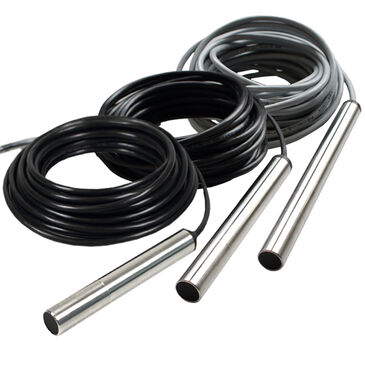Watch tutorials, webinars and informative videos about PreSens optical sensor systems.
Dissolved Oxygen Monitoring in Wastewater Treatment

A huge amount of wastewater is produced every day in residential areas or industrial sites. Several different treatment steps are necessary to clean it and recover this valuable resource, so it is safe to reintroduce the water into the environment or repurpose it.
In the first steps of treatment the wastewater is cleaned mechanically. Larger pieces of debris and garbage are removed, and the flow velocity is reduced so sand, pebbles and heavier dirt particles can sink to the bottom, where they can be siphoned off. At the same time fats and oils collect on the water surface and can also be removed.
Next follows the biological treatment. In an aerated basin activated sludge consisting of microorganisms degrades harmful carbon and nitrogen compounds. The bacteria need oxygen to metabolize, which is why air is blown into the basin. Generally, the oxygen content in the aerated tank is controlled by oxygen sensors and held at about 2 mg/L, which is optimal for the microbial degradation processes. The water is then directed into a non-aerated tank. The lack of oxygen ensures that the microorganisms in the activated sludge are better able to break down even harmful phosphorus compounds. After that the activated sludge is allowed to settle and can be reused or treated further. For the treatment of industrial wastewater, it might also be necessary to add certain chemicals to precipitate harmful substances so they can be extracted. There can be further filtration or disinfection steps but finally the treated wastewater is discharged from a secondary clarifier into the so-called receiving water (a river, lake, or the ocean) or is repurposed e. g. for use in irrigation. At this point the biochemical oxygen demand (BOD) in the water is a critical parameter. The BOD is the amount of oxygen needed by microorganisms to metabolize organic compounds in water. The BOD of the treated wastewater can influence the oxygen levels in the receiving body of water and must therefore closely be monitored.
All steps of wastewater treatment must be closely monitored, to ensure no harmful substances are released back into the environment. Reliable methods or sensors are needed to check the contaminant levels or the load of organic material still present.
PreSens optical oxygen probes can ensure optimal conditions during the biological wastewater treatment phase. The robust steel probes can be directly connected to central control units and as part of a sensor array, they can deliver valuable information, so the process is not impaired. The probes have excellent long-term stability and compared to e.g. Clark-type electrodes, the optical sensors require almost no maintenance. With constant DO readings the aeration rate in the tanks can be regulated and energy conserved.
Another stage in wastewater treatment where PreSens dissolved oxygen probes contribute to a safe process is before the water gets reintroduced to the environment. It must be ensured that the amount of organic matter still present and the BOD are not at a level that might harm the ecosystem, animals, or humans at the reintroduction site.
OXYBase® Series Oxygen Probes
This series of robust, low-maintenance probes is ideally suited for dissolved oxygen measurements in sewage and wastewater treatment. The probes communicate via RS232 or RS485 and can be directly connected to a control unit. They can be delivered with various cable lengths as required and an OXYBase® probe with analog output is also available. With their stainless-steel housing (SUS 316 L) and exchangeable sensor caps they provide a long-term solution for your dissolved oxygen measurements during wastewater treatment.





